#Who'sThatKnockingAtMyDoor
Text
Ranking : Martin Scorsese (1942-present)

Of all the places in the world that seem to be hubs for creative energy, New York stands high on my personal list of favorites, and when it comes to iconic New York filmmakers, there aren’t many that can hold a candle to the prolific career of Martin Scorsese. His appreciation for films, art and music blasts off the screen with the same energy as his kinetic cinematography and vibrant editing. Once he established himself as a mainstay in the industry, his list of collaborators evolved into a who’s who of acting legends, both old and new. His career spans just over 50 years, and even his latest film (his 25th in his catalog) went head to head with other contenders for the top awards of the year.
To put it bluntly, there is Martin Scorsese, and then there is a long list of imitators and those influenced by his genius. To rank his films is a true test of logic, patience and decision making, but after a few weeks of catching the 7 or so films I had yet to see, I think I can stand behind this list as my definitive ranking (from least to most favorite) of a director I hold in the highest regard.

25. Gangs of New York (2002)
An honest attempt at an epic flick, but at the heart of the matter, I simply don’t care about either side in the battle Scorsese presents us. Set in New York City in the mid 19th Century during the Civil War, we are thrown into a generational battle where the two key figures have different goals... Bill the Butcher stands as antagonist in his fight to maintain power and control, while Amsterdam is our protagonist charged with a mission of revenge. In the end, neither side ends up mattering, very much like my personal experience with this all flourish, no foundation exercise in style.
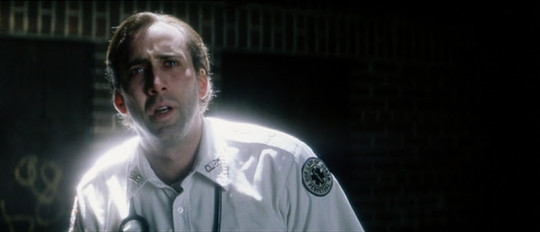
24. Bringing Out the Dead (1999)
Nicolas Cage was gearing up for the run that most people know him for now during the release of Bringing Out the Dead : he was coming off of Golden Globe and Academy Award wins for Leaving Las Vegas, but was quickly leaning towards films of a more exploitation-based style. This film marked a refinement of his wild-man persona, while simultaneously being one of the last high-level actor/director combinations he would be involved in before his mad dash to accept every film and avoid bankruptcy. New York is captured in a mid-transition point between the darkness of the 1970s and 1980s versus the Disney aesthetic of the new millennium, and while heavy on the entertainment factor (as well as visually striking), there is ultimately not enough on this plate to push it higher up the list.
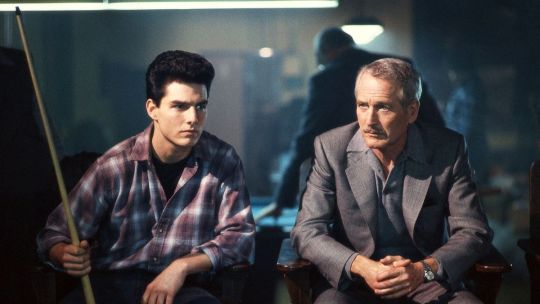
23. The Color of Money (1986)
If you had to do a quick gander at the Scorsese list and pick the film that, on paper, screams Hollywood, it’d be hard to argue against The Color of Money taking that top spot. A soft sequel to The Hustler, Scorsese picks up the Fast Eddie story in the 1980s (an era that oozes out of each and every frame of this film), and yet, despite this legendary move, the film is ultimately the Tom Cruise show. Scorsese’s trademark dollying and trucking camera shots work beautifully in the context of this film, but in a story that shines bright, the star of Cruise ultimately outshines all that remains.

22. Alice Doesn't Live Here Anymore (1974)
After a few exploitation-based projects, it seemed that Martin Scorsese wanted to provide a slightly different change in perspective, albeit one that still dwells in the darker corners of life. Rather than deal with the streets of New York or crime, Alice Doesn’t Live Here Anymore is a study on broken homes, single parenthood and domestic violence that oscillates between the view of the titular Alice and her young son. Harvey Keitel gives another strong performance as a Scorsese regular, while Ellen Burstyn shines in a transitional role towards more mature performances. Seeing Scorsese camera movements coopted into a more down to Earth story was refreshing.
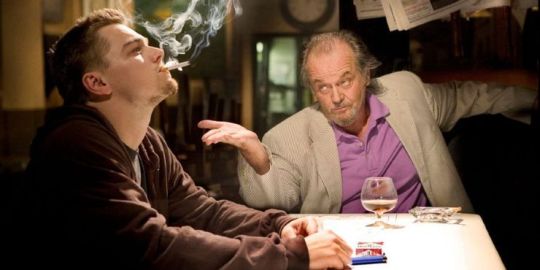
21. The Departed (2006)
Many people would have assumed that The Departed would be higher on a list of Scorsese films based solely on the cast... pairing Leonardo DiCaprio opposite Matt Damon in a tension-filled triangle with Jack Nicholson is a bold combination in its own right, but surrounding this nucleus with Martin Sheen, Mark Wahlberg, Alec Baldwin, Kevin Corrigan, Anthony Anderson and supporting actors of that ilk creates a rich showcase of talent. Stylistically, everything you need is there too, as Scorsese proved time and again that films of this nature were his wheelhouse. That being said, the story itself, an adaptation of the 2002 Hong Kong thriller Infernal Affairs, takes a few liberties in its adaptation that ultimately are to the detriment of the narrative. Kudos to Scorsese for putting this one together, and too bad for him that the choices of William Monahan knocked what could have been a mega-classic way down the list.

20. New York, New York (1977)
New York, New York is one of the most unique offerings from the Scorsese canon for a number of reasons. Of all his films, this one is probably the one that can be considered a “style exercise” more than the rest, as it oscillates between obvious sets and real locations before blurring the lines between the two. Long gaps of time are given to fully executed musical numbers (a must when a talent like Liza Minnelli is involved), and traditional methods of songwriting and performance are given their due respect. The exercise portion, however, comes in the newer acting styles that are infused into the old school structure... improvisation and aggressive physicality are used to put a deeper, disturbing red tint on an era often presented through a rose-colored lens. While interesting at times, the nearly three hour run time of the film begins to wear on the limits of the style, which ultimate leaves the film feeling more like a personal indulgence than a statement on changing times. For the iconic title track alone (and the buildup to its release), this film is worth seeing, but in terms of its placement in the realm of other Scorsese films, it may have to grow on me a while to find a higher placement on the list.

19. Boxcar Bertha (1972)
Originally, this film was much lower on the list, largely due to its chronological placement between Who’s That Knocking at My Door and Mean Streets seeming odd to me. Upon revisitation, however, it stands clear and present that this film served as an exercise in the process of directing and organizing a shoot. With its period-specific placement, ensemble cast and action sequences, it was bound to be compared to (and ultimately overshadowed by) the formidable Bonnie and Clyde, but Boxcar Bertha has a few key moments in it (including a stellar final action sequence) that places it near the middle of the Scorsese canon, even with it being his second film.

18. Who's That Knocking at My Door? (1967)
For all of the refinement that Scorsese found in his second film, his debut film, the stunning Who’s That Knocking at My Door?, stands as testament to the fact that Scorsese brought his many gifts to the table from day one. What started as a student graduate film grew into a speculative project, only to find 25th hour funding that allowed it a festival run and a proper release. The film took many years to complete and release, to the point that keen viewers will notice Harvey Keitel’s boyish, soft good looks morph into the sharper, edgier intense profile we came to recognize in Mean Streets and the films that followed. The energetic cinematography, respect of film as a medium, stellar music choices, defiance of youth, toxic masculinity and realistic look at relationships are all here, making this debut a hidden gem in the Scorsese canon.

17. The Wolf of Wall Street (2013)
Seeing Scorsese retread old stylistic ground (as opposed to infusing his style into newer projects) is an interesting take, and for what my opinion is worth, The Wolf of Wall Street feels like Goodfellas for white collar criminals. In theory (and, in some aspects of the film, in reality), the experiment does work, but ultimately, this film finds its placement in the middle realms simply because we are given infinite sizzle off of what amounts to a very thin steak. Goodfellas works because it is carried by the weight of omerta, but The Wolf of Wall Street focuses on a culture where status comes from self-appointed importance, which ultimately makes for an attempted redemption story for despicable people.
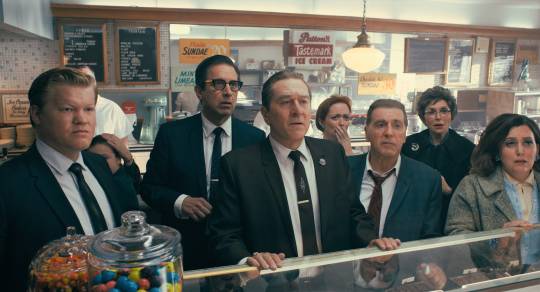
16. The Irishman (2019)
Seeing actors the stature of Robert De Niro, Joe Pesci and Al Pacino combine forces for a film is always a major event, but until 2019, those combinations have been limited to duos. When Netflix announced its intention to release The Irishman in 2019, people were not only intrigued on Scorsese’s take on the Jimmy Hoffa story, but seeing De Niro, Pesci and Pacino in the same film for the first time. For what it was worth, the trio lived up to all expectations, with the only bittersweet criticism being wishes that the three could have found a way to work together prior to the twilight of their careers. The historical drama is high quality, with Hoffa’s larger than life persona captured perfectly by Pacino, and bolstered by the dramatic chops brought to the table by De Niro and Pesci. The film is a tad on the long side, and the de-aging process tips into the realm of the uncanny valley due to the older actors’ physicality, but for a 25th film 52 years into an illustrious career, The Irishman must be recognized for the triumph that it is.
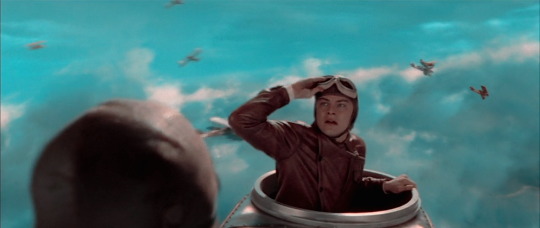
15. The Aviator (2004)
Much like The Wolf of Wall Street, I avoided The Aviator for years simply because I have no interest or fascination with Howard Hughes. I was very much aware of his financial stature, his innovations as an aviator, his rocky love life and his personal demons that plagued him, but for my money’s worth, I was fine without seeing it presented on the big screen. In an effort to cover all the bases for a director I hold in high esteem, however, I made the decision to finally check out The Aviator, and for every element of the film I previously had no interest in, an element was presented that won me over. Cate Blanchett and Adam Dunn put on two of the strongest performances in the entire realm of Scorsese films, and the XF-11 crash sequence is possibly one of the grandest and well executed in any Scorsese film. Leave it to Martin Scorsese to make a powerful film about an individual I care nothing about and nearly crack the top ten with that effort.

14. Hugo (2011)
Up to the point of watching Hugo, I knew nothing about it. About halfway through Hugo, I had to stop and look up how the film was received, as it was simply stunning, and sure enough, it was a monster in terms of award nominations and wins. I never would have pegged Scorsese as the type to direct a kid’s film, but in all honesty, that ‘kid’s film’ title is used as a façade for a love letter to film in general, and the groundbreaking work of Georges Méliès specifically. The look of the film is otherworldly, the energy is light, kinetic and infectious, and even a mostly slapstick performance by Sacha Baron Cohen yields surprising emotional depth when given the opportunity to do so. While just missing the top ten, Hugo easily stands as the number one surprise on this list in terms of pre-viewing expectations (of which there where none) versus post-viewing thoughts (of which there are many). Knowing that Hugo exists lets me know that one day, if I have children, and they want to know why I love film so much, I will have a film on the level of Cinema Paradiso to share with them and (hopefully) help foster a love of film they can call their own.
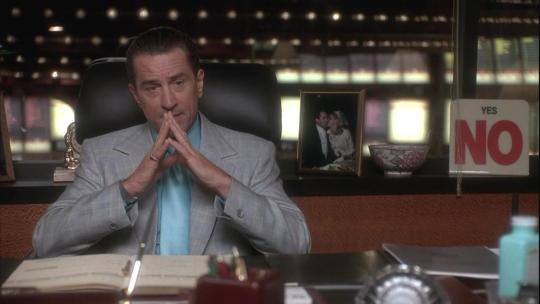
13. Casino (1995)
For a time, this film stood as the last work containing the vibrant combination of Martin Scorsese, Robert De Niro and Joe Pesci, a trio of high energy creatives known for putting their all into their projects. Casino felt like a spiritual successor to Goodfellas, focusing on a lavish but secretive lifestyle with high stakes and even higher consequences. An instantly iconic movie, Casino felt like the end of an era in regards to gangster fare for Scorsese, opting instead for more challenging projects, adaptations of other books and films, or personal passion projects. It would be nearly 25 years later before Scorsese would touch similar subject matter or work with these actors again, but had Casino been the last of Scorsese’s so-called “gangster” films, I believe the world would have been happy with that.

12. Kundun (1997)
To make one religious-based film in a career is a bold move to some, but I am hard-pressed to think of any director that made films on two different religions who didn’t explicitly make religious films. With that in mind, it is incredibly impressive that Martin Scorsese was able to make a film as moving and objective as Kundun after making such a bold take on religion as The Last Temptation of Christ. The film centers around the discovery, growth and eventual escape to India in light of growing aggression from China. In all honesty, I had my doubts as to whether or not the Scorsese style would work for this story, especially in light of the lack of cooperation from Tibet and China, but somehow, Scorsese’s amazing signature camerawork captures the unique spirit and essence surrounding the Dalai Lama. I’d heard of this film for years, but never got around to it until it was time to make this list, but I will almost certainly try to find a copy to own in the near future.

11. The King of Comedy (1982)
What an odd left turn in regards of career trajectory for both Scorsese and De Niro. With three collaborations already under their belt (not to mention The Godfather II already being a well-established classic), it would have been easy to imagine the duo putting another notch on the gangster film genre belt. What we are given, however, is the yang to the yin of Taxi Driver : our protagonist is a statement on personal conviction and the trappings of instant stardom, our antagonist is a statement on star fascination and the high costs of celebrity, and our satellite characters directly reflect the toxicity certain fandoms can be capable of. Scorsese sets aside his normal flourish and camera moves for a mixing of film and video mediums, as well as a completely new sense of freedom in regards to the highly improvised nature of the film. Its influence on recent successful films like Joker is undeniable, but I’d argue that Joker lacks the heart, sincerity and realistic bite present in The King of Comedy.
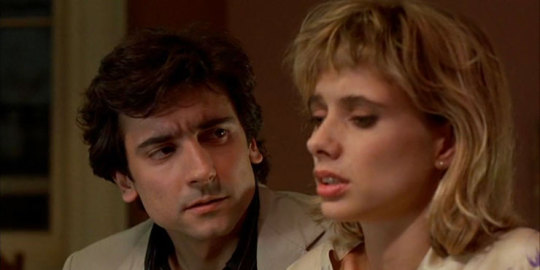
10. After Hours (1985)
Of all the “new to me” Scorsese flicks I finally viewed while preparing this list, After Hours stands as my favorite discovery of the bunch. I was marginally familiar with the film, both from my younger days in video stores and from friend recommendations, but for some reason, when Scorsese time arrived, After Hours seemed to never be on the docket. That oversight, however, will now be a thing of the past. This film feels like a personal challenge to Woody Allen in regards to how one should make a New York-based romantic comedy, and I’d be hard pressed to share any shortcomings or failures present in this comedic masterpiece. One of the few films that can be both a product of its era and a timeless classic, and one that should be much more recognized in the Scorsese canon.
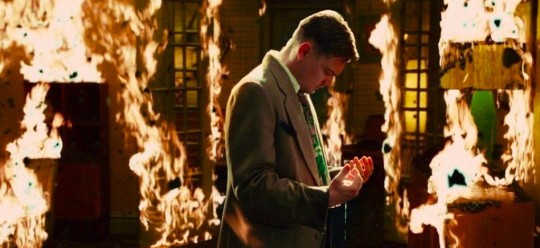
9. Shutter Island (2010)
Me hesitating or not getting around to Scorsese films seems to be a bit of a common theme here, but there was literally no excuse for me to take this long to get around to Shutter Island. Despite knowing the premise of the story (and even having the ending somewhat spoiled for me), I still found the impact of the final moments just as powerful as I imagine I would have going into this film blind. Some people will likely argue this statement, but in my opinion, this was the best Leonardo DiCaprio performance captured by Martin Scorsese. The asylum setting is wonderfully bleak, and the psychological horrors it infers create a vibrant playground for some of the most stunning visual symbolism that Scorsese has ever committed to film. Don’t be like me if you’ve not gotten around to Shutter Island yet, because it’s a thrill ride more than worth the price of admission, and a rewarding repeat viewer.
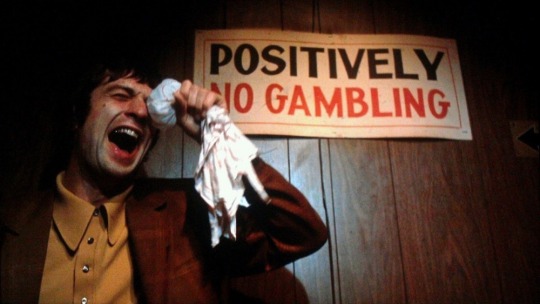
8. Mean Streets (1973)
Mean Streets may have been Martin Scorsese’s third film, but for many fans, it was the first true indicator of the brilliance that was to come. A true New York film through and through, it not only presented fans with a stronger Harvey Keitel performance than Who’s That Knocking at My Door?, but it introduced the world to the palatable tandem of Scorsese and De Niro that would go on to lead to years and years of iconic performances. The use of altering aspect ratios is something that I wish Scorsese would have continued to use more often, but in all honesty, Mean Streets has style to spare. This the film that I love to recommend when people start ranting and raving about Goodfellas, and more often than not, it impresses those unfamiliar with it just as much.

7. The Age of Innocence (1993)
Martin Scorsese’s love of film is widely known and well documented, but The Age of Innocence goes an additional step further by displaying Scorsese’s love of art. The film also is one of the most touching displays of unrequited love that Scorsese has committed to film, a slight alteration from his normal infusion of love stories trying to sustain in the surrounding chaos of gangs, crime, religion and so on. Daniel Day-Lewis, Michelle Pfeiffer and Winona Ryder all give standout performances in this masterfully directed film. If Gangs of New York was meant to be the definitive old school New York film in the Scorsese canon, then The Age of Innocence is the unintended definitive New York film from Scorsese, with some European touches thrown in for good measure.

6. Cape Fear (1991)
Of the many, many iconic performances that Robert De Niro has given Martin Scorsese, I’d be hard pressed not to put his characterization of Max Cady at the top by a clear margin. Cape Fear was already a classic film adaptation of The Executioners when it was first released in 1957, but De Niro pulled two fast ones with his update : in terms of casting, especially with the aforementioned De Niro, Scorsese brought the harrowing story into a much darker, recent world, therefore increasing the tension by upping the ante for violent retribution, while at the same time, paying direct homage to the original by having Elmer Bernstein adapt the original Bernard Herrmann score. Juliette Lewis also provided a breakout performance in this modern day classic, and possibly the film that provided the most tense debate in terms of placement, as we will get into with the next film.
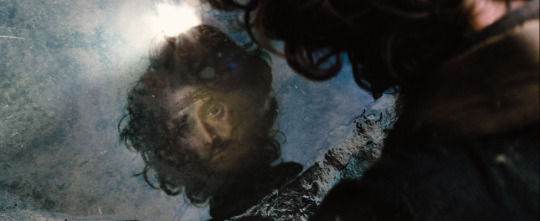
5. Silence (2016)
Despite being one of the most recent Martin Scorsese films, this one’s limited release meant that I missed it during its initial run, and the lack of streaming service placement essentially erased it from my memory. I was certainly intrigued about watching it for this list, and it ended up being the last film viewed. Going into it, it felt like a sort of religious take on Saving Private Ryan, but it didn’t take long for the film to start dealing out much heavier cards in terms of faith, belief systems and cross-cultural contamination. The Last Temptation of Christ showed that Scorsese could find nuance and secular drama from a holy tale, and Kundun showed that he could make a religious icon a relatable human figure struggling to grasp his divine appointment. Silence is the work of a wise, steady hand, however, like some sort of cinematic parable or testament to faith in the face of crippling doubt and danger. Scorsese is certainly still moved by the idea of faith, and he uses Andrew Garfield to display this in some of the most powerful moments that he has ever created or captured for his films. For those who have not seem the film, this placement may feel a bit high, but I would not be surprised if, given time and proper amounts of reflection, it makes its way higher.
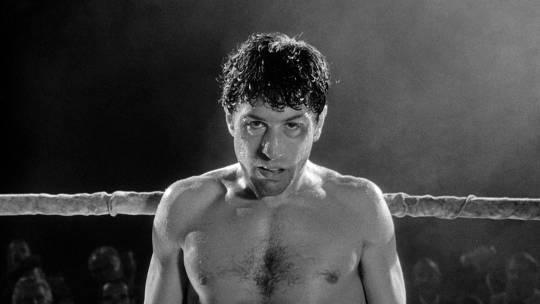
4. Raging Bull (1980)
The placement of Raging Bull and Cape Fear was the biggest hurdle I was forced to overcome in the creation of this list. Robert De Niro is powerfully captivating in both films, though I would personally give his performance as Max Cady the nod over his embodiment of Jake LaMotta, but when it comes down to the brass tacks of it all, Raging Bull is ultimately the better of the two films. The raw, black and white look of LaMotta’s life already provides a gritty, unflattering portrait of a savage and uncouth man looking for beauty in the world, but that beauty he searches for appears in the boxing sequences with no apologies. The airy look, mainly caught by dynamic slow motion photography, works in tandem with the abrasive first-person views of the combatants, not to mention the direct nature of the combat itself as the viewer is often placed directly in the line of fire. The involvement of the real LaMotta within the film provides a nice button to the superb acting put on display by De Niro, Joe Pesci, Cathy Moriarty and the numerous actors used to portray the opponents of LaMotta.
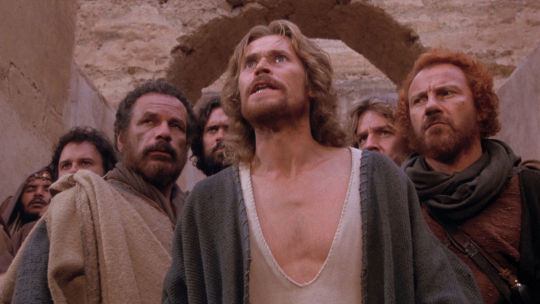
3. The Last Temptation of Christ (1988)
Call it a trope if you like, but it feels like every great (or aspiring) director has a film in them that is driven by religion in some capacity. The Last Temptation of Christ is unique in this sense because it takes the story of the accusations, betrayal, trial and eventual crucifixion of Jesus and turns it into a deeply faith-based suspense thriller. Many of the familiar beats we know from the Bible are re-contextualized as visions, mystic tests of faith, carnal desires driven by lust, and nihilistic views infringing upon deep indoctrination. Willem Dafoe plays a Jesus that is bitter in his acceptance of his fate, Harvey Keitel plays a wonderfully opportunistic Judas, and Barbara Hershey plays a very modernized version of a woman forced to use her body for survival that is suddenly trapped between necessity and passion. The film hinges on the verge of becoming a soap opera without falling into the trappings that come with such high drama, and the walkup to the film’s amazing final sequence puts you in the emotional passenger's seat while Jesus takes the wheel and steers directly into his fate. A dramatically powerful yet brutally sincere take on an iconic, revered and sensitive subject matter.
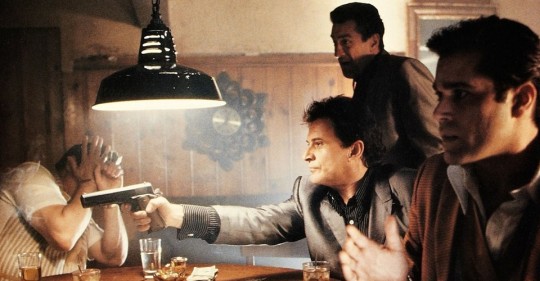
2. Goodfellas (1990)
Is there any original praise left to bestow upon this movie? To focus on the imperfections of this film is an act of futility, as they are mostly non-existent. Some of Martin Scorsese’s best examples of his iconic camera movement, editing techniques, still frames, writing gleaned from personal experience, soundtrack use, loose historical connections and dark humor are found within the confines of Goodfellas. If you’ve seen in actor in any television show or film that had any connection to the mob prior to Goodfellas or since, it is more than likely that that actor was in Goodfellas, even if only briefly. Using Henry Hill as both an outsider and insider perspective is a brilliant narrative stroke, as he can get close to the top, but can never have it all, making him essentially a fly on the wall bursting with charisma and personality. They highs are as epic as the lows are tragic, and for most people, it is the first film that comes to mind when the name Martin Scorsese is mentioned. This could have very easily been the number one film on my list, but anyone who has been visiting this blog with a keen eye for detail probably figured out my favorite Scorsese film the first time they visited the DOOMonFILM blog.
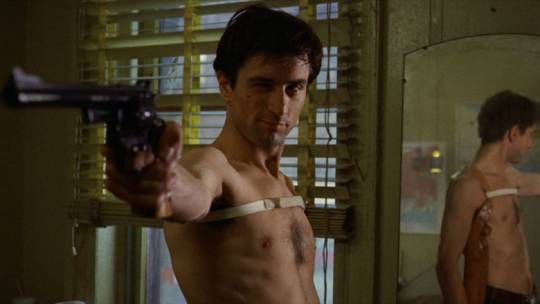
1. Taxi Driver (1976)
Since the day that I started this film blog, there has been one image at the top of the page : Travis Bickle in the porn theater (with his face replaced by my logo) from the iconic Taxi Driver. There’s not a single element that I can put my finger on for this film, but there are certainly a number of elements that do speak to me : the isolation that Travis faces, the journal-like narration that drives the story forward, the hypnotic nature of both Bernard Herrmann score and the repetitive taxi cab shots and the vivid camera movements are all burnt firmly into my brain. Everyone that makes up the main cast for this film kills in their performance, and the ending of the film is not only a brutal one, but an ironic one in regards to where Travis lands in the eyes of those who make up the world of the film. Martin Scorsese has made more amazing films than some directors have made, period (amazing or otherwise), but for my money’s worth, none of them are as powerful or well put together as Taxi Driver.
#ChiefDoomsday#DOOMonFILM#MartinScorsese#Who'sThatKnockingAtMyDoor#BoxcarBertha#MeanStreets#AliceDoesn'tLiveHereAnymore#TaxiDriver#NewYorkNewYork#RagingBull#TheKingOfComedy#AfterHours#TheColorOfMoney#TheLastTemptationOfChrist#Goodfellas#CapeFear#TheAgeOfInnocence#Casino#Kundun#BringingOutTheDead#GangsOfNewYork#TheAviator#TheDeparted#ShutterIsland#Hugo#TheWolfOfWallStreet#Silence#TheIrishman
13 notes
·
View notes
Photo
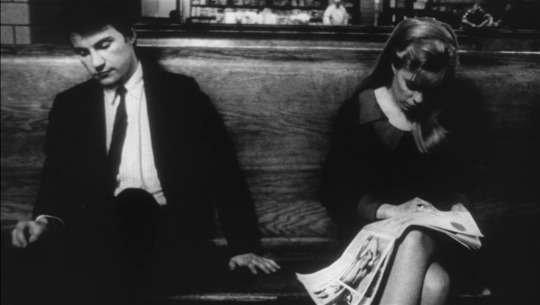



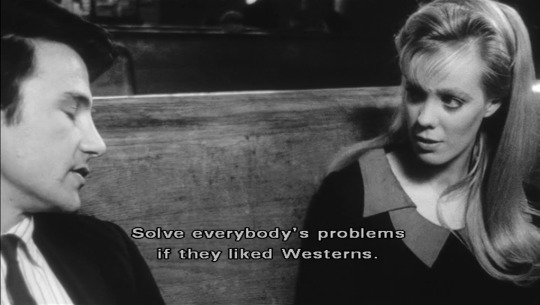
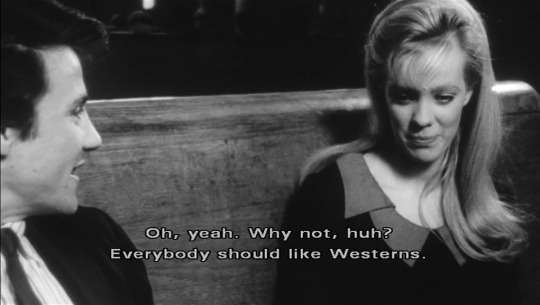


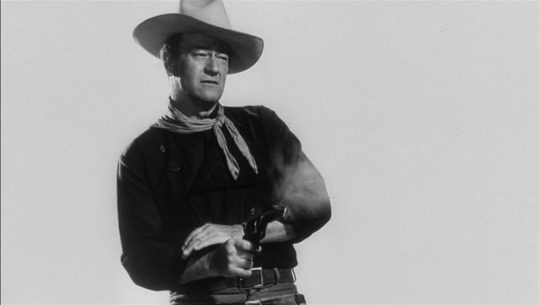

about westerns and John Wayne ...
WHO’S THAT KNOCKING AT MY DOOR - MARTIN SCORSESE / 1967
FRAMES
#martinscorsese#Martin Scorsese#who's that knocking at my door#who'sthatknockingatmydoor#harveykeitel#keiteil#Harvey Keitel#scorsese#film#frames#aghostframes#aghost#john wayne#johnwayne#western#westerns
30 notes
·
View notes